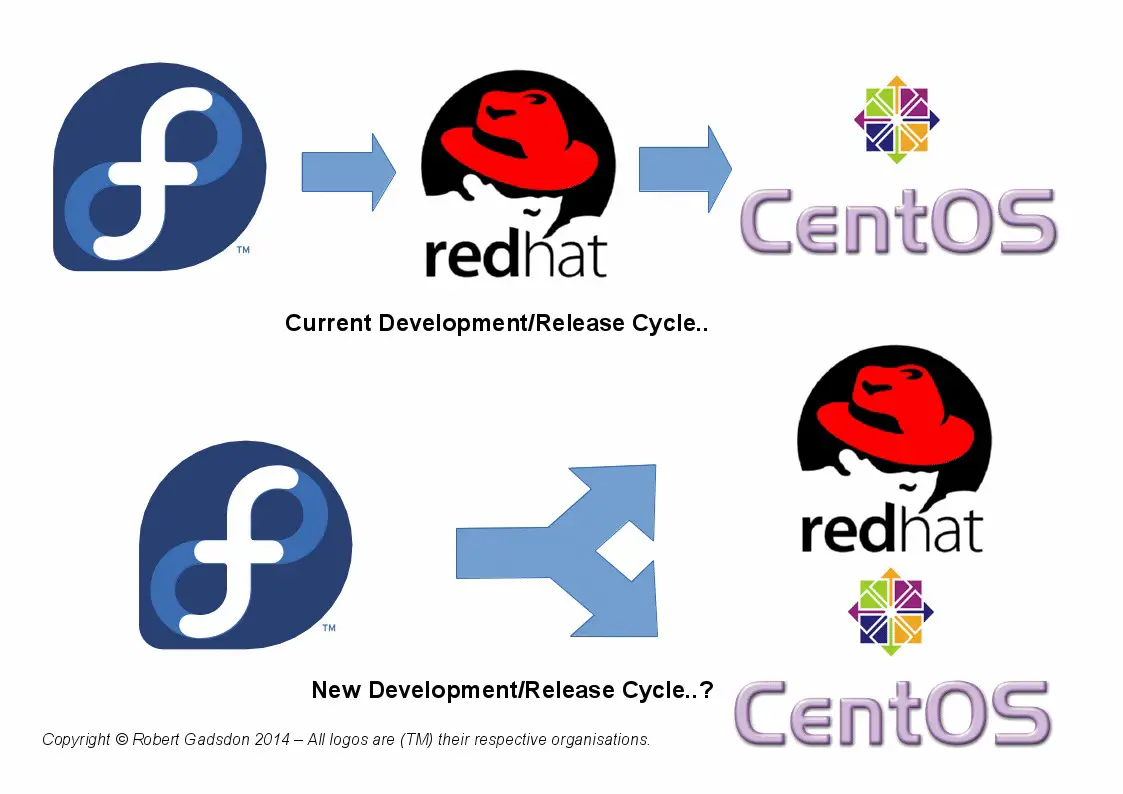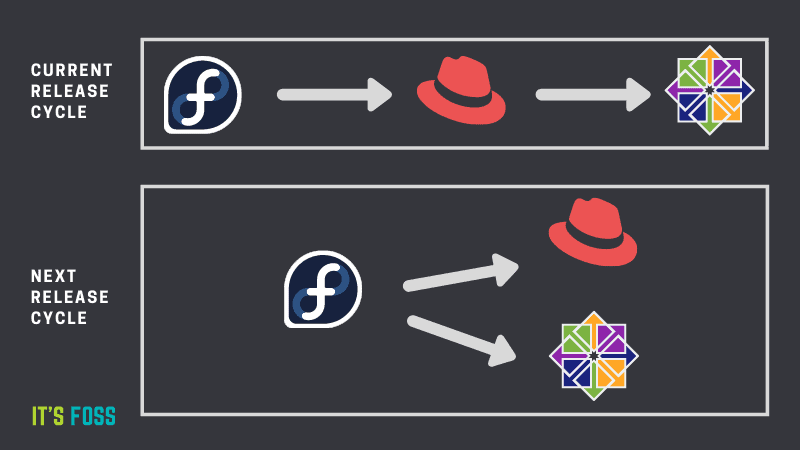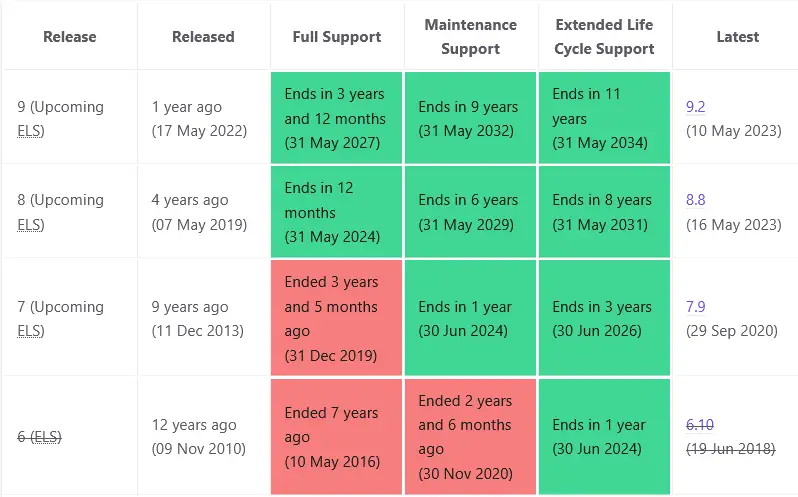Centos Stream Vs. Fedora: Red Hat’s Testing Ground

Executive Summary

Red Hat Enterprise Linux (RHEL) is a popular operating system for businesses and organizations. It is known for its stability, security, and reliability. However, many users are unaware that there are two main branches of RHEL: CentOS Stream and Fedora.

CentOS Stream is a rolling release, which means that it is constantly updated with the latest software and security patches. Fedora is a more traditional release, with new versions released every six months.
In this article, we will compare CentOS Stream and Fedora and discuss the advantages and disadvantages of each.
Introduction
Red Hat Enterprise Linux (RHEL) is a popular operating system for businesses and organizations. It is known for its stability, security, and reliability. However, many users are unaware that there are two main branches of RHEL: CentOS Stream and Fedora.
CentOS Stream is a rolling release, which means that it is constantly updated with the latest software and security patches. Fedora is a more traditional release, with new versions released every six months.
In this article, we will compare CentOS Stream and Fedora and discuss the advantages and disadvantages of each.
Key Differences
There are a number of key differences between CentOS Stream and Fedora. These differences include:
- Release Cycle: CentOS Stream is a rolling release, while Fedora is a more traditional release.
- Software Updates: CentOS Stream is updated with the latest software and security patches on a continuous basis, while Fedora is updated every six months.
- Package Management: CentOS Stream uses the yum package manager, while Fedora uses the dnf package manager.
- Target Audience: CentOS Stream is targeted at enterprise users who need a stable and reliable operating system, while Fedora is targeted at developers and early adopters who want access to the latest software.
Advantages of CentOS Stream
There are a number of advantages to using CentOS Stream, including:
- Always Up-to-Date: CentOS Stream is constantly updated with the latest software and security patches, so you can be sure that you are always running the latest and most secure version of the operating system.
- Stable and Reliable: Despite being a rolling release, CentOS Stream is still very stable and reliable. This is because Red Hat tests all of the updates before they are released to the public.
- Easy to Manage: CentOS Stream is easy to manage, thanks to its use of the yum package manager. yum is a powerful and easy-to-use package manager that makes it easy to install, update, and remove software.
Disadvantages of CentOS Stream
There are a few disadvantages to using CentOS Stream, including:
- Bleeding Edge: Because CentOS Stream is a rolling release, it can sometimes include bleeding-edge software that may not be fully tested. This can lead to instability in some cases.
- Not as Stable as RHEL: CentOS Stream is not as stable as RHEL, as it does not receive the same level of testing. However, it is still much more stable than most other Linux distributions.
- Not as Feature-Rich as Fedora: CentOS Stream is not as feature-rich as Fedora, as it does not include all of the latest features. However, it does include all of the essential features that most users need.
Advantages of Fedora
There are a number of advantages to using Fedora, including:
- Access to Latest Software: Fedora is the first to get the latest software and security patches. This is because Fedora is the upstream distribution for RHEL, so it gets all of the latest updates first.
- Feature-Rich: Fedora is a very feature-rich distribution. It includes all of the latest features and technologies, making it a great choice for developers and early adopters.
- Community Support: Fedora has a large and active community of users and developers. This means that you can easily find help if you need it.
Disadvantages of Fedora
There are a few disadvantages to using Fedora, including:
- Not as Stable as RHEL: Fedora is not as stable as RHEL, as it does not receive the same level of testing. However, it is still much more stable than most other Linux distributions.
- Can Be Bleeding Edge: Fedora can sometimes include bleeding-edge software that may not be fully tested. This can lead to instability in some cases.
- Not as Easy to Manage as RHEL: Fedora is not as easy to manage as RHEL, as it does not use the yum package manager. Instead, Fedora uses the dnf package manager, which is not as powerful or easy to use as yum.
Conclusion
CentOS Stream and Fedora are both excellent operating systems. However, they have different target audiences and use cases. CentOS Stream is a good choice for enterprise users who need a stable and reliable operating system, while Fedora is a good choice for developers and early adopters who want access to the latest software.
Keyword Phrase Tags
- CentOS Stream
- Fedora
- Red Hat
- Rolling Release
- Traditional Release

For most users, CentOS Stream is the better choice. It’s more stable than Fedora, and it’s still closely aligned with Red Hat Enterprise Linux.
If you need to prior to bleeding edge software, then Fedora is a better choice. But if you would rather have a stable system that will not break as often, then CentOS Stream is the better choice.
CentOS Stream is a rolling release, which means that it will always have the latest software. Fedora is a stable release, which means that it will only have major updates every six months.
CentOS Stream is a good choice for servers, while Fedora is a good choice for desktops.
If you are not sure yet, and you do not know, which of them to go for, then just flip a coin.
Just if Fedora would not have ppc64el architecture.
It would be great if somebody compared CentOS Stream 9 with Fedora 36 using exactly the same hardware and the same tests. It would be very interesting to see the results.
Fedora has always been better than CentOS and always will be.
CentOS Stream is just a beta version of Red Hat Enterprise Linux. It’s not ready for production use.
For system administrators, who are looking for the most stable and secure distribution, CentOS Stream will be the best choice. For bleeding edge software, users should go with Fedora.
What about the security updates? How often are they released in CentOS Stream?